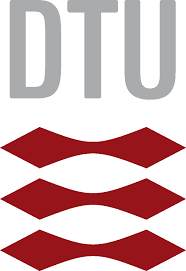While I teach the majority of the lectures we do have guest lectures for topics outside my area of expertise. Below are the lectures topics that I give for this course.
Introduction: This lecture presented the current global state of energy use, a broad overview of climate change and the potential of various renewable energy sources and storage techniques.
Solar Spectrum: The solar spectrum is the main energy source for earth, thus it is important in understanding how much energy and what type of energy it provides earth with. Climate, solar cells, photosynthesis, and indirectly wind and wave power all are effected by the sun.
Photovoltaics: This is a 2 part lecture about the physics of how photovoltaics work. The main focus is on Si and other crystalline materials that separate electrons and holes via p-n junctions.
Wind Energy: This is a lecture on the basic fundamentals of wind turbines. It contains the derivation of Betz equation, the maximum power, and the physics behind thrust of the wind blade.
Heat Engines: This is simply applied thermodynamics. The lecture explains how power plants, refrigeration cycles, otto engines, diesel engines and gas fired turbines work.
Electrochemistry and Batteries: First there is a brief overview of the global energy storage situation and how that could change when renewable energy is used specifically focusing on an electrified approach versus a heat engine approach. We then go into the fundamentals of electrochemistry and finish by applying this to batteries
Fuel Cells and Hydrogen Storage: This lecture focuses on proton exchange membrane hydrogen fuel cells and hydrogen storage in the form of compressed hydrogen, liquified hydrogen, and metallic hydrides.
Electrolyzers: This lecture discusses how electrolyzers work, and where are the losses. It briefy discusses scaling relationships in the O2 evolution half-reaction. This lecture also briefly discusses CO2 reduction to hydrocarbons and N2 reduction to ammonia.
Photocatalysis and Photosynthesis: This lecture initially focuses on inorganic photoelectrocatalytic water splitting (both single photoabsorber and tandem approach). It then discusses photosynthesis primarily by looking at photosystem II, Cytochrome b6f, photosystem 1, ATP Sythase, and the Calvin Cycle. Biomass is also discussed briefly.

